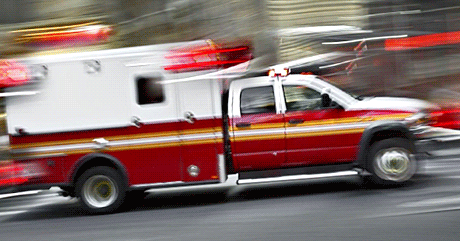Freestanding Emergency Rooms and Ambulance Billing
Training Week
This week was a training week for our ambulance billing office. Each year we take a full day out of our normal routine, in addition to our ongoing training regimen, to host a representative from the National Academy of Ambulance Coding for a day of immersed training of all things billing related. Once again this year noted speaker Doug Wolfberg, law partner with the well-known firm Page, Wolfberg and Wirth spent the day with us.
Freestanding Emergency Rooms
A growing trend that we are seeing more and more of across the United States is the advent of the Freestanding ER along with the many Urgent Care Centers that are dotted across the landscape. The introduction of these treatment locations causes those of us in the ambulance billing world to take a step back and think about how to properly apply what we call origin and destination modifiers to the claims that we submit for payment.
 Freestanding ERs are typically cropping up in very rural areas that do not have access to full-fledged hospitals and lack adequate emergency care in many cases. In contrast, they are also popping up in affluent areas where hospital systems are competing for every patient and attempting to bring care closer to new patient markets in direct competition with established traditional hospital facilities.
Freestanding ERs are typically cropping up in very rural areas that do not have access to full-fledged hospitals and lack adequate emergency care in many cases. In contrast, they are also popping up in affluent areas where hospital systems are competing for every patient and attempting to bring care closer to new patient markets in direct competition with established traditional hospital facilities.
Thanks to Wolfberg’s excellent presentation, we are all reminded how we billers must work together with all of you in the provider world to be certain we are identifying and representing these locations accurately on the claims that we submit- especially when submitting to Medicare and Medicaid.
Is the Freestanding ER a Covered Destination?
We’ll talk Medicare now, because as you know they are the “big guys” that set the standard and they are the most picky in many cases about how we do things in the billing office.
Medicare only covers transportation to hospitals, critical access hospitals and skilled nursing facilities that are capable of furnishing the required level and type of care for the patient’s illness or injury. In order for a Freestanding ER (the emergency room without the attached full-fledged hospital) to be considered a hospital as a covered destination, the Freestanding ER must meet Medicare’s criteria as a “provider based” facility. This means that the owners of the Freestanding ER must complete a “provider based attestation” and file it with the Centers for Medicare and Medicaid Services (CMS).
Therefore, the only way that you as an ambulance provider or administrator of an EMS agency are going to be able to prove to your billing office that using an “H” modifier (H = Hospital) on the claim they are submitting for the transport you are completing is to request a copy of the provider based attestation from the administrators of the Freestanding ER. Your billing office can then keep this document on file as proof that they have vetted out the location and are properly applying the origin/destination modifier to the claim submitted for reimbursement.
Not Provider Based…Not Billable…
Of course, if the Freestanding ER turns out to not be provider based then the location must be considered a physician’s office or other non-facility location and transportation to that facility as a destination will not be covered by Medicare (and by extension probably Medicaid- depending on the State’s rules nor by other insurances who parallel the use of Medicare rules.)
However, transportation FROM one of these “not provider based” locations may be covered such as transporting the patient from an Urgent Care Center to a hospital emergency room for a valid medical necessity. These transports are usually billable to Medicare Part B assuming all other criteria for coverage are satisfied.
Next week…
In this blog space next week, we’ll take this whole discussion one step further and talk about transport from a Freestanding ER to a hospital location, which brings up a whole different set of variables to consider when billing. See you then!